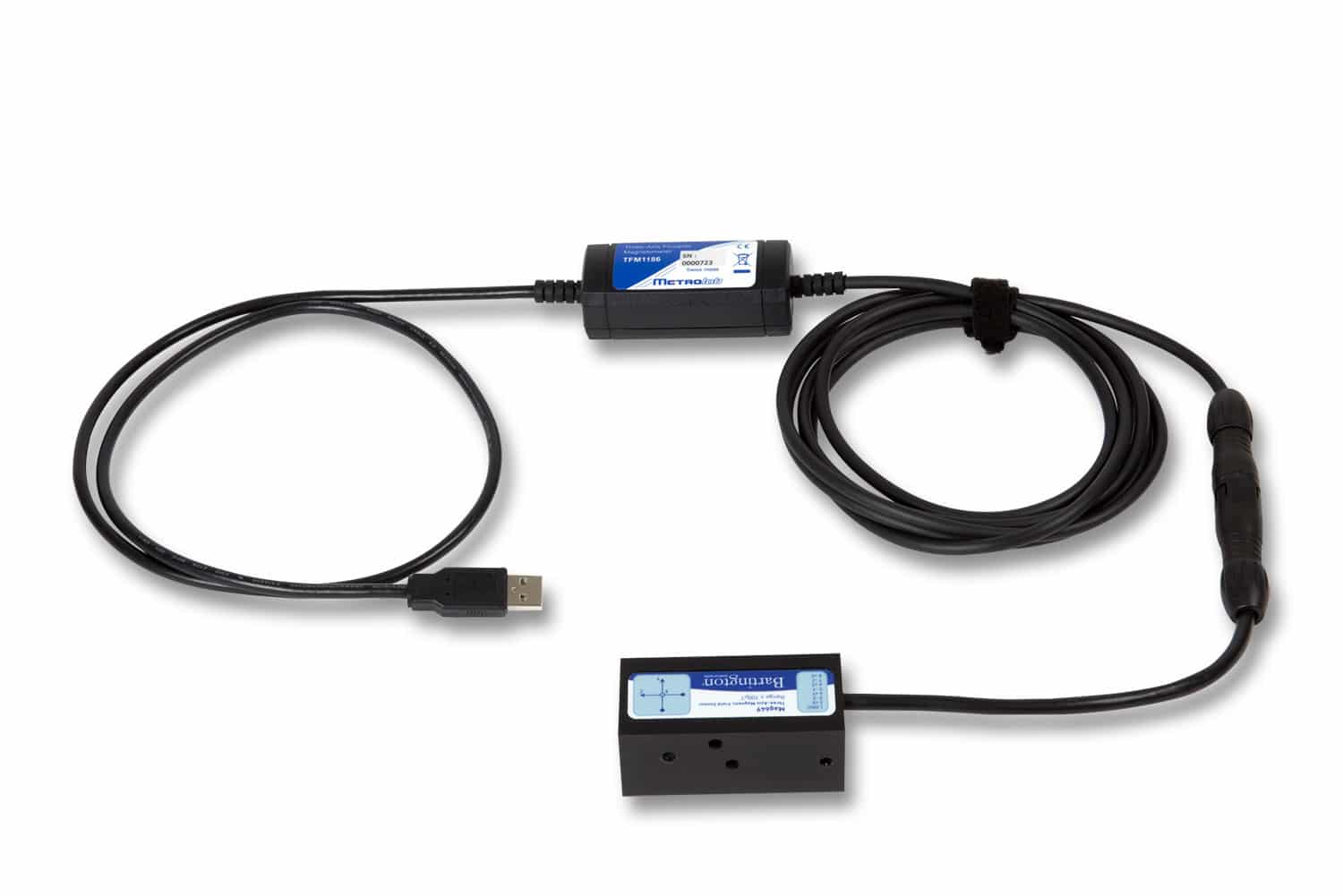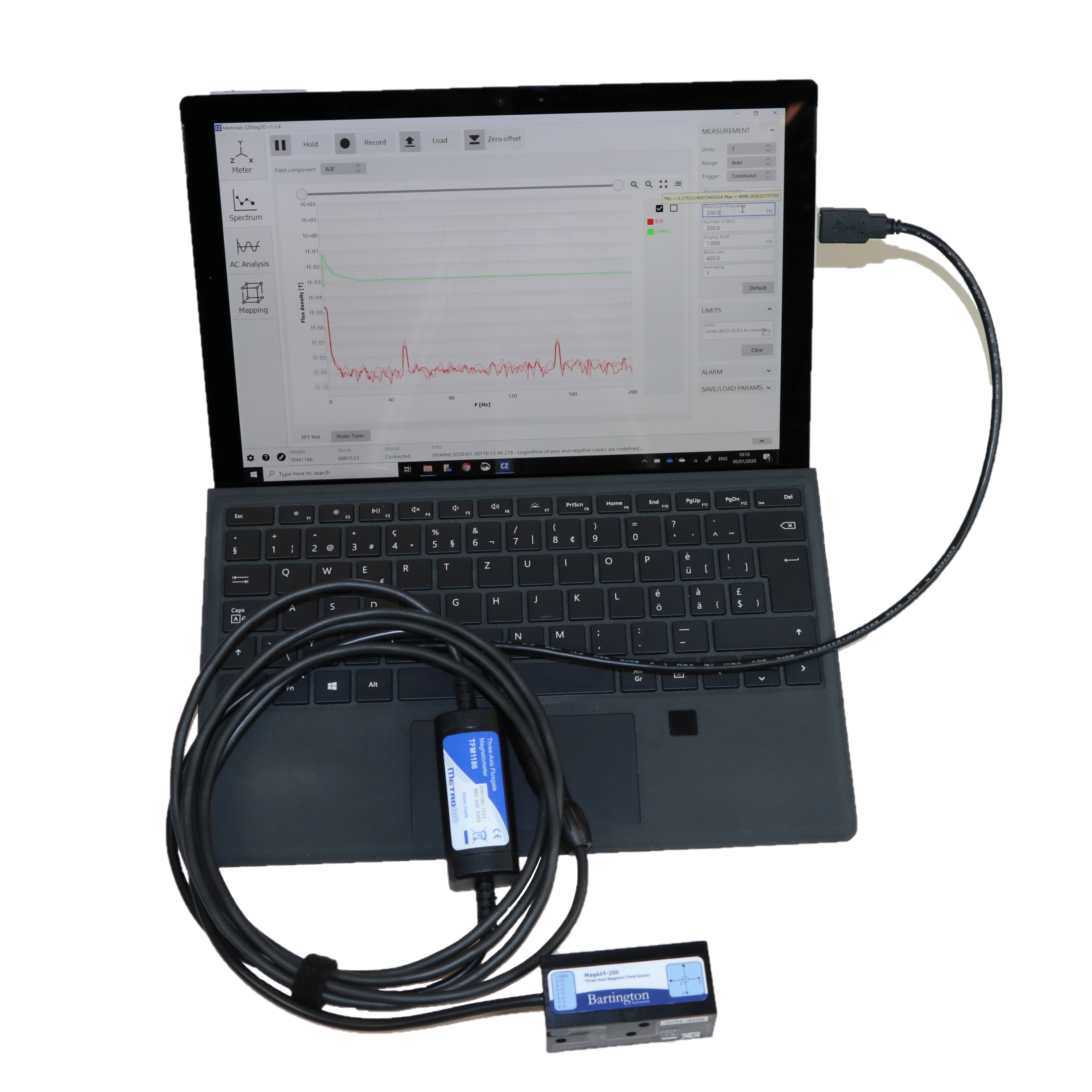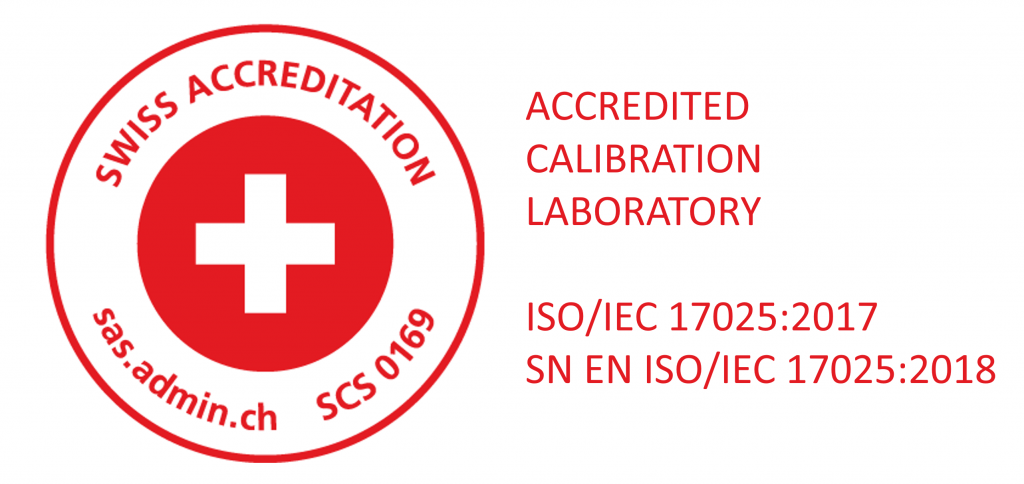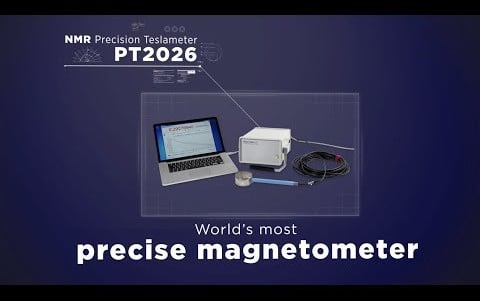Fluxgate
Satured, unsatured, repeat!
Fluxgate magnetometers evolved during the Second World War as a means of detecting submarines. Military applications continue to be an important market, but geologists and archeologists have also become big fans of these robust and extremely sensitive instruments. Metrolab uses fluxgate sensors produced by a respected specialist to complement its Hall instruments, extending the rangeThe range of a probe is defined by the minimum and maximum field strength it can measure. On an instrument,... More to very low fields.
How fluxgate magnetometers work
8 minutes
Advantages
Great sensitivity
Single- or multi-axis measurements
Robust
Low power consumption
Satured, unsatured, repeat!
A fluxgate magnetometerAn instrument to measure magnetic flux density (B) or magnetic field intensity (H). More consists of a soft-iron core with two coils wrapped around it: a drive coil and a sense coil. An alternating voltage drives the core continuously through a complete hysteresis cycle, from saturation in one direction to saturation in the other. The sense coil measures the fluxThe magnetic flux density, B, integrated over an area. The voltage induced in a coil is proportional to the flux... More changes in the core.
Gating the flux
The magnetic permeability of the core – the slope of the B vs. H curve – is modulated as the core goes into and out of saturation: unsaturated, the core has the high permeability of soft iron, saturated, it suddenly drops to the low permeability of free space. This means that the fluxThe magnetic flux density, B, integrated over an area. The voltage induced in a coil is proportional to the flux... More density B in the core due to an external field H is also modulated; one can think of the fluxThe magnetic flux density, B, integrated over an area. The voltage induced in a coil is proportional to the flux... More due to the external field being switched off as the core saturates, and back on as the core desaturates – hence the name “fluxgate”. Clever demodulation schemes allow the magnitudeThe magnetic field is a vector quantity. We may be interested in its individual components or its total magnitude. More of this gated field to be measured by the sense coil.
The devil is in the detail
Although the basic principle is relatively straightforward, the actual performance depends on many factors:
– Core material: To maximize the signal, the core material should be as magnetically “soft” as possible, with a very narrow hysteresis loopThe characteristic of ferromagnetic materials that they remain magnetized when the external field is removed. See also B/H loop. More and sharp saturation point. Other characteristics of the core material, such as temperature coefficient, isotropy, and long-term stability, determine crucial other sensor characteristics.
– Core geometry: Clever core geometries dramatically improve the sensitivity by canceling the direct transmission of the drive to sense signal. One such geometry uses two parallel cores, with the drive coil wound in opposite directions. The sense coil is wound around the pair so that the fluxThe magnetic flux density, B, integrated over an area. The voltage induced in a coil is proportional to the flux... More generated by the two drive coils cancel out.
– Multi-axis: Another core geometry is a ring, with the drive coil wound toroidally and the sense coil around the entire ring – a straightforward extension of the parallel-rod design. The direction of the sense coil determines the sensitive direction of the sensor; two orthogonal sense coils on the same ring make an XY sensor, and with two rings, one can make an XYZ sensor. Note that in this design, the axes are centered on a single point.
– Synchronous detection: A single cycle of the drive voltage causes two saturation/desaturation signals from the sense coil: once in the forward and once in the reverse direction. Synchronous 2nd harmonic detection can, therefore, be used to improve the signal-to-noise ratio.
– Feedback: The dynamic rangeThe range of a probe is defined by the minimum and maximum field strength it can measure. On an instrument,... More and linearity can be significantly enhanced by using the fluxgate signal as a null detector. It controls a current that is fed back into either the sense coil or a separate feedback coil, nulling out the external field.
– Frequency response: A higher drive frequency allows a higher sensor bandwidth, but needs to be traded off against the sensitivity.
– Demodulation electronics: The demodulator must be carefully designed to optimize noise, offset, bandwidth, and the temperature coefficient.
– CalibrationDuring calibration, the instrument reading is compared to one or more references to verify its accuracy. The references themselves need... More: To achieve good accuracyAccuracy is how close a measure conforms to reality. Even if our NMR Teslameter displays 9 digits, we claim 5... More, a proper calibrationDuring calibration, the instrument reading is compared to one or more references to verify its accuracy. The references themselves need... More technique is paramount. Given the high sensitivity of fluxgate sensors, it is especially challenging to create the right zero reference field.
More technologies
Products
Related products

TFM1186 Fluxgate Magnetometer
Applications
Related applications
MRI
Pre-installation site survey
Science
Magnetic background monitoring
Want to know more ?
Contact us for more information !






